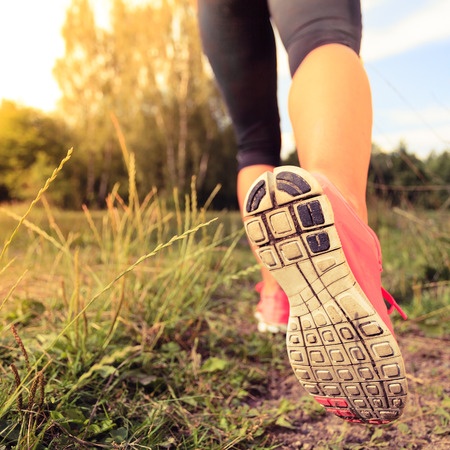By Linda Melone
Walking is as simple as it gets for exercise. All you need is a good, supportive pair of walking shoes.
“Just a few extra steps each day is a simple and easy way to take an active role in maintaining a significantly healthier life,” says Timothy Gardner, MD, past president of the American Heart Association.
Get Started
Set a baseline. If you’re not active now, “start walking three times a week at a stroll for 20 minutes,” says Courtenay Schurman, author of The Outdoor Athlete. Work your way up to five or so times a week, 30 minutes per session for a total of 2.5 to 3 hours per week.
Choose distance or time. Some walkers focus on distance, others target time. “Ultimately, it’s about speed,” Schurman says. “If you can walk 5 miles but it takes you 5 hours to do it, it’s not a fit level of work. So use both distance and time as well as heart rate,” Check the intensity. Exercising at a particular heart rate shows you how hard you’re working. You can check your pulse or by wearing a heart rate monitor. What should your heart rate be? “Most recommendations suggest starting out at 70% to 75% of your maximum heart rate,” Schurman says. “But this may not be enough if you’re fit.”
You can also use the “talk test” to gauge your exercise intensity. “If you can string together six to eight words or chat briefly, you’re in your aerobic zone,” Schurman says. If you are gasping for air, slow down. If you can say several phrases with one breath, you may not be working hard enough.
4 Ways to Stay Motivated
- Wear a pedometer. Bit by bit, boost your daily steps. Keep it up until you reach 10,000 steps a day.
- Keep a walking journal. Whether you journal online or with pen and paper, it’s motivating to see your progress.
- Get a walking partner. A walking partner provides accountability.
- Sign up for a race or charity walk. An upcoming event gives you a goal to shoot for, which may motivate you to stick with a program.
Make It More Challenging
If you’re already fit, kick up the intensity by doing one or more of the following:
Speed up. “The easiest way to up the ante is to simply walk faster,” says Therese Iknoian, author of Fitness Walking. You may want to try race walking, which burns more calories. Brisk walking at 4 miles an hour burns 334 calories, and strolling at 3 miles per hour burns 221 calories, according to the College of Sports Medicine.
“Remember to pump your arms but keep the movement compact,” Iknoian says, “The larger the arm swing, the harder it is to move them faster.
“Head for the hills, If you can’t get outside, raise the incline on the treadmill. Don’t hang on to the treadmill as you walk or you’ll miss the benefits, Iknoian says. “You don’t want to look as if you’re water skiing.
“Change the surface.” Walking on trails and maneuvering around rocks increases muscular demand,” Iknoian says. Snow, sand – even grass — make walking more of a challenge.
Use Nordic poles to use your upper body muscles. “You increase the cardio, workout when using poles, plus they take the stress off of knees when walking downhill,” Iknoian says.
Add resistance with a weighted backpack or weight vest. “If you use a backpack, fill it with water, sand, or kitty litter so the weight distributes evenly,” Schurman says. “Avoid ankle and hand weights, which can change your gait and can set you up for injury.”
8 Safety Tips for Walkers
Keep safety in mind when you walk outdoors. Follow these basic rules:
- Walk with a buddy whenever possible.
- Carry your name, address, and a friend or relative’s phone number in your shoe or tied to a lace.
- Wear a medical bracelet if you have diabetes, an allergy, or other condition.
- Carry a cell phone and let a friend or relative know your walking routes.
- Avoid deserted or unlit streets, especially after dark.
- Do not use headsets that prevent you from hearing traffic, and walk against oncoming traffic.
- Wear reflective material or carry a flashlight so others can see you.
- Carry a whistle, noisemaker, or pepper spray in case of an emergency.
@Linda Melone. All Rights Reserved.

